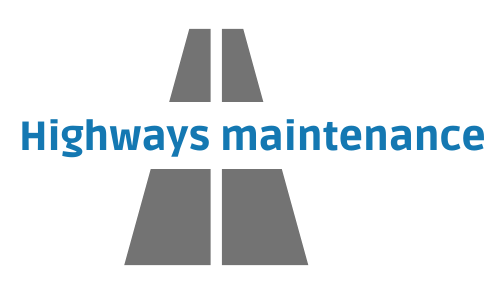In today's interconnected world, the way we communicate has transformed dramatically, especially in bustling urban centres like London. Digital platforms now mediate our conversations, relationships, and daily interactions, creating new dynamics in how we connect with others. This shift affects everything from our family relationships to professional networks, fundamentally changing how Londoners experience and navigate their social landscape.
The digital revolution in london homes
London households have witnessed a remarkable transformation in how family members communicate with each other. The traditional evening conversation around the dinner table has increasingly been supplemented—and sometimes replaced—by continuous digital exchanges throughout the day. Communication has a massive impact on everyday life, influencing how family members share important information, coordinate schedules, and maintain emotional connections despite busy London lifestyles.
Messaging apps transforming family connections
WhatsApp has become the lifeline of many London families, creating virtual family spaces that transcend physical boundaries. Parents check in with teenagers via quick messages, grandparents receive photo updates of grandchildren, and family group chats buzz with daily snippets and important announcements. These digital connections maintain family bonds even when work commitments, school activities, and London's notorious commutes keep family members physically apart for much of the day.
The instantaneous nature of these platforms has created new expectations around response times and availability. Many Londoners report feeling a sense of ambient awareness of their loved ones' activities through these constant, low-intensity communication channels, creating a feeling of connection even during physical separation.
Virtual meetings replacing face-to-face interactions
Since the pandemic accelerated adoption of video conferencing tools, London homes have transformed into multi-purpose spaces where kitchen tables double as conference rooms. Families have adapted to sharing bandwidth and finding quiet corners for important calls. This blending of professional and personal spaces has introduced new challenges but also opportunities for London households.
Many Londoners now report saving valuable hours previously lost to commuting, allowing more quality time with family members. However, this shift has also blurred the boundaries between work and home life, requiring families to establish new norms around digital interruptions and privacy during virtual meetings.
Non-Verbal Communication in the Modern Era
Each day, we use our voices and expressions to share information and connect with others. In London's diverse multicultural environment, where residents speak hundreds of different languages, non-verbal communication takes on particular importance. Digital platforms have created new challenges in interpreting these crucial non-verbal signals.
Body language in video calls
Video calls capture only a fraction of the body language signals we process during in-person meetings. London professionals have become increasingly aware of how camera positioning, lighting, and background elements affect how they're perceived in virtual environments. Many report developing a heightened awareness of their facial expressions and upper body movements, while simultaneously feeling frustrated by the limited view they have of others' complete body language.
This partial visibility of non-verbal cues can lead to misunderstandings and communication gaps. London-based communication coaches report increasing demand for training on effective virtual presence, helping clients understand how to project confidence and attentiveness when physical presence isn't possible.
Emoji usage as emotional expression
With text-based communication stripping away vocal tone and facial expressions, Londoners have embraced emojis as emotional shorthand. These digital pictographs have evolved into a sophisticated parallel language, allowing nuance and emotional context to be added to written messages. From softening potential criticism with a winking face to expressing affection with hearts, these symbols help bridge the emotional gap in digital exchanges.
Research indicates that different generations of Londoners interpret and use emojis differently, sometimes leading to cross-generational miscommunications. What seems like friendly enthusiasm to a teenager might appear unprofessional or confusing to their parents, creating new challenges in family digital communication.
Communication technology and relationship dynamics
The platforms we use to communicate inevitably shape the nature of our conversations and relationships. London households navigate a complex landscape of communication technologies that each bring different strengths and limitations to relationship management.
Managing conflicts through digital platforms
Digital communication can both exacerbate and help resolve conflicts within London households. Text-based platforms sometimes amplify misunderstandings due to lack of tone and immediate feedback, with family members reporting that disagreements can escalate more quickly when conducted via message than in person.
However, these same platforms can also provide breathing space during heated moments. Some London families report that difficult conversations sometimes progress more productively when begun in writing, allowing for thoughtful composition rather than reactive responses. The asynchronous nature of messaging gives family members time to process emotions before responding, potentially leading to more measured communication during conflicts.
Building trust in remote communication
Trust requires consistent, reliable communication, presenting unique challenges in digital environments. London families have developed various strategies to maintain trust across digital channels, from establishing clear expectations about response times to creating dedicated spaces for meaningful conversations away from group chats.
Video calls have become particularly important for trust-building conversations, with many Londoners reporting that seeing facial expressions and hearing voice tone helps create the emotional connection necessary for difficult or important discussions. London relationship counselors increasingly recommend scheduled video chats for couples and families working through trust issues, recognizing the importance of these visual cues in building and maintaining emotional bonds.
Developing Effective Communication Skills for the Digital Age
 Understanding how communication affects us helps us handle different situations, whether in our personal lives or at work. As communication platforms evolve, so must our skills in using them effectively and meaningfully.
Understanding how communication affects us helps us handle different situations, whether in our personal lives or at work. As communication platforms evolve, so must our skills in using them effectively and meaningfully.
Active listening in virtual environments
Active listening takes different forms in digital spaces. In video calls, Londoners report developing new habits to demonstrate attentiveness, such as maintaining eye contact with the camera rather than the screen, using visible nods and small verbal acknowledgments, and minimizing distractions in their environment.
In text-based communications, active listening manifests through thoughtful responses that reference specific points made by others, appropriate response timing, and asking clarifying questions. London communication experts recommend developing platform-specific listening skills, recognizing that different digital environments require different techniques for showing engagement and understanding.
Balancing online and offline communication
Perhaps the greatest communication challenge for modern London households is finding the right balance between digital convenience and in-person connection. Many families report establishing tech-free zones or times in their homes, such as during meals or before bedtime, to ensure quality face-to-face interaction.
London parenting groups increasingly focus on helping families establish healthy digital boundaries while acknowledging the important role of technology in modern communication. Rather than demonizing digital platforms, the emphasis has shifted toward mindful usage that complements rather than replaces in-person interaction, creating communication patterns that harness the benefits of both worlds.
Cultural Diversity and Communication Patterns in London Households
The bustling metropolis of London stands as one of the world's most diverse cities, where communication takes countless forms across its multicultural households. From quick WhatsApp messages to Zoom family gatherings, the ways Londoners connect with one another reflect both the city's global character and the evolving nature of modern relationships. Within London homes, communication styles blend traditional customs with digital innovation, creating unique patterns that vary dramatically from Hackney to Harrow, Brixton to Barnet.
Digital platforms have transformed how London families interact daily. Morning texts wishing loved ones a good day, video calls connecting relatives across continents, and family chat groups sharing everything from grocery lists to celebration plans have become standard practice in the capital's households. Yet beneath these technological tools lie deeper patterns of cultural expression that make London's communication landscape particularly rich.
Navigating multicultural communication styles
London's households reflect an extraordinary tapestry of cultural backgrounds, each bringing distinct communication norms. In homes across Southall, verbal expression might be animated and expressive, while in certain East Asian households in Richmond, communication often emphasises subtlety and contextual understanding. These different styles create a fascinating dynamic when cultures intersect through friendships, neighbourhoods, and blended families.
The city's schools, community centres, and workplaces become melting pots where these diverse communication styles meet and adapt. Children growing up in multicultural London often develop remarkable code-switching abilities, seamlessly transitioning between different cultural communication modes as they move between home, school, and social settings. This linguistic and gestural flexibility represents one of London's greatest social strengths, fostering understanding across cultural boundaries.
Food often serves as a communication bridge in London's diverse households. Sharing meals becomes a form of expression that transcends verbal limitations, with family recipes and cooking traditions communicating heritage and identity even when language barriers exist. Many London families maintain cultural connections through food-centred gatherings where stories are shared and bonds strengthened.
Intergenerational communication gaps and bridges
The technology divide presents both challenges and opportunities for London households spanning multiple generations. Grandparents may struggle with video calling platforms while their grandchildren navigate social media with ease. Many London families report the pandemic accelerated digital adoption among older members, with elderly relatives mastering Zoom and WhatsApp to maintain vital connections during lockdowns.
Language differences often create complex dynamics in London's multigenerational homes. Older family members might maintain heritage languages while younger generations primarily speak English, creating situations where full expression becomes challenging. Many London families develop creative communication strategies, with children translating for grandparents or mixing languages to ensure everyone feels included in family discussions.
Despite these challenges, London households frequently find innovative ways to bridge generational gaps. Shared activities from cooking to gardening create spaces where communication flows naturally despite age differences. Digital photo sharing has emerged as a particularly effective bridge, with many families creating WhatsApp groups where visual stories require minimal verbal explanation, allowing all generations to participate in family narratives regardless of language or technological proficiency.

